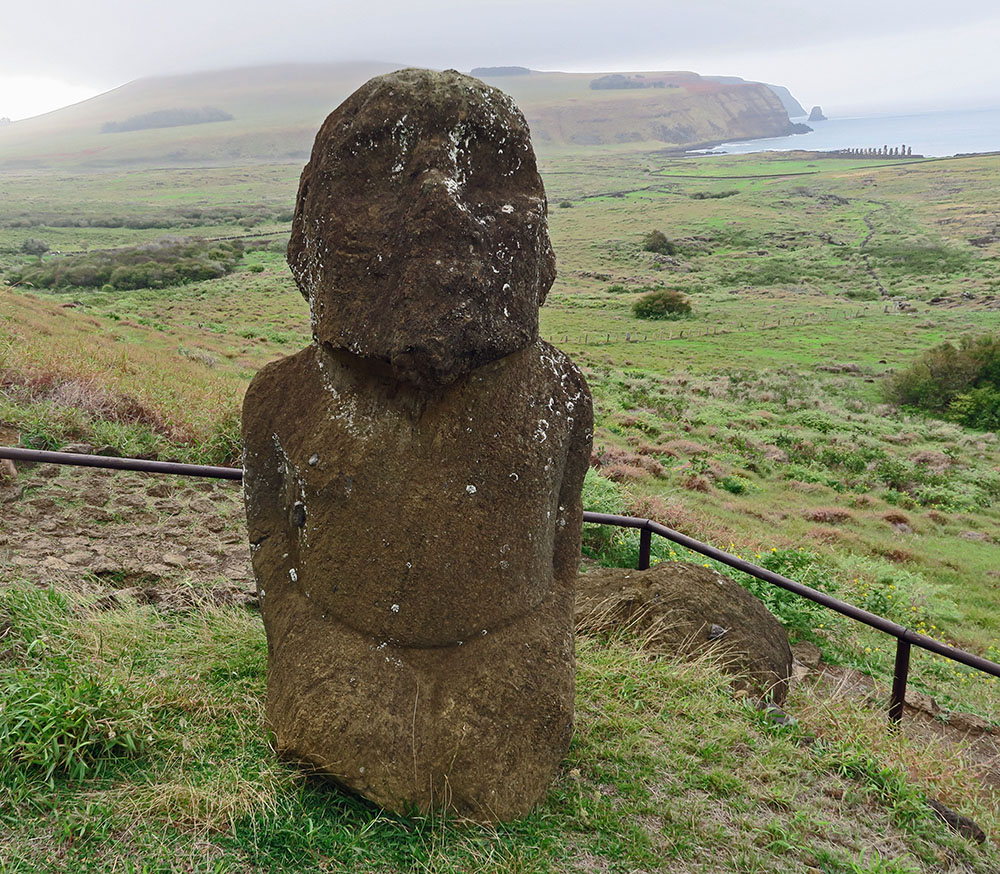Easter Island is one of the world’s most recognizable locations. It’s not the Chilean island’s natural landscapes that make it so iconic; rather, it’s the imposing, ancient rock statues called moai that dot the island’s surface.
The moai are immediately identifiable as Easter Island’s most famous residents chiefly because of their homogeneity; with their long, pointed noses, sloped foreheads, pursed lips, and jutting chins, the moai of Easter Island have trademarked the island’s signature look. Well, all but one has.

Tukuturi, on Easter Island, looks nothing like the famed island's other ancient statues. Photo courtesy of Kirk K.
Tukuturi is an Easter Island moai unlike any other. First of all, it has a beard — all the other moai are, for lack of a better term, clean-shaven. Secondly, Tukuturi is kneeling, where its moai counterparts around Easter Island are standing upright. Finally, it has a rounded head, soft nose, and upward-gazing eyes — in other words, it doesn’t look like an Easter Island statue at all.
The statue was discovered in Easter Island’s Rano Raraku quarry, where most of the island’s famed moai were carved. However, Tukuturi is made from a different material than most moai. While the familiar, flat-faced figures of Easter Island are mostly carved out of tuff, which is a compressed volcanic ash, Tukuturi is carved from red scoria, which is a more fragile type of volcanic rock. There are hundreds of moai carved from tuff, but only 19 — including Tukutiri — made of scoria.

Tukuturi's kneeling pose, beard and rounded head make this moai unlike any other. Photo courtesy of Kirk K.
The pose that Tukuturi sits in suggests it is either in a moment of reverence or one of offering. Researchers have theorized that this moai is related to the Tangata manu cult of Easter Island, which would make Tukuturi one of the last moai on the island to have been created.
Despite all of this known information, however, Tukuturi’s unusual appearance and singularity remains somewhat of a mystery: Why is it the only one of its kind? What is the significance of the kneeling pose, and why is the statue crafted out of a different material than so many of its moai bretheren? Historians may never know, making this unique stone statue all the more fascinating — and worth seeing in real life.
Getting there
Want to see Tukuturi for yourself? Our Easter Island Independent Adventure trip will get you up close and personal with the island's many moai. We're thrilled at the idea of showing you a bit more of this big, blue planet. Check out our Easter Island Independent Adventure itinerary here.























